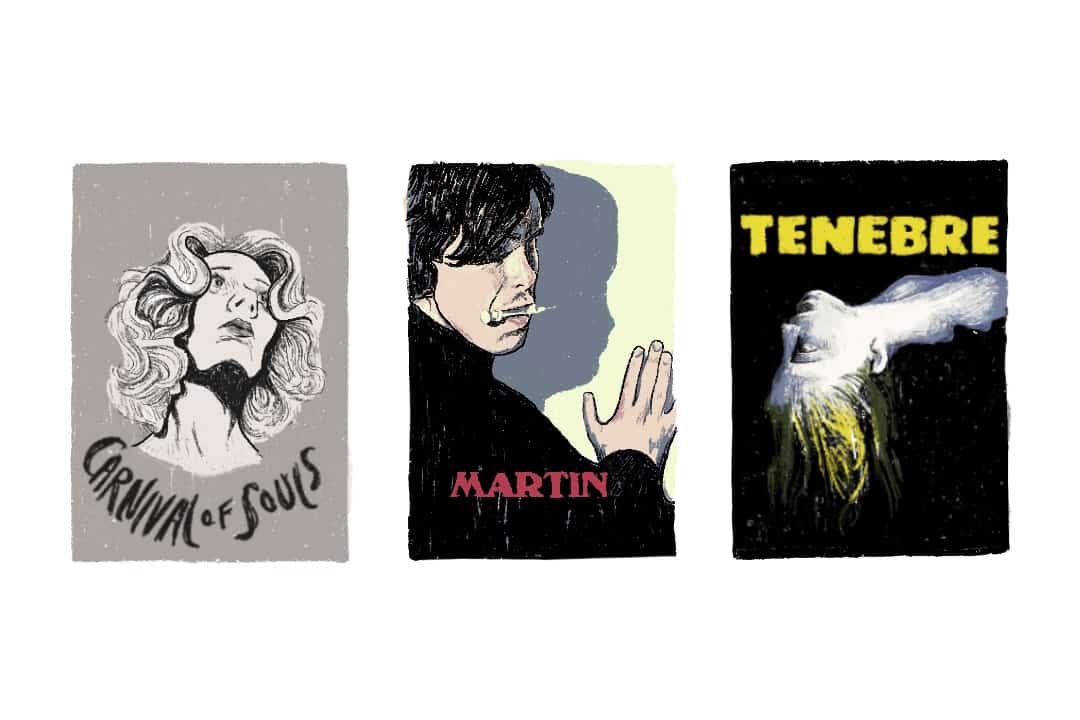Content warning: Mentions of violence, death, and gore, and themes some may find disturbing.
Looking for something spooky to watch for Halloween?
Want to watch The Shining? No, you have seen it a dozen times already.
What about The Exorcist? Maybe it’s a bit too classic.
How about something that might have completely swept under your radar?
Here are some carefully selected films which you may have never seen before. They are not talked about often, but they all have something interesting to offer. So bear with me as we explore these underrated gems… if you dare!
House of Usher (1960)
A young man on his way to visit his sick lover wanders through a forest of dying trees and mist until a crooked mansion comes into view. In this house, the protagonist learns about an old curse surrounding the family as a dreadful atmosphere builds up.
Directed by B-movie legend Roger Corman, penned by Richard Matheson, and starring Vincent Price, House of Usher is a faithful adaptation of Edgar Allan Poe’s short story “The Fall of the House of Usher.” The film symbolically illustrates the dark roots of the aristocracy and its slow decay over time by using the crumbling mansion as a metaphor.
Despite its very modest budget, the gothic set design and the ominous lighting are still effective to this day and inspire aspiring filmmakers working with limited money. Corman cleverly used every opportunity he had to handle the film as cheaply as possible, such as seeking a barn house about to be demolished for shooting the climax or taking his crew to a fire site to shoot the brooding opening sequence.
Carnival of Souls (1962)
After an innocent car race ends up killing most of those involved, lone survivor Mary decides to start a new life as an organ player in a different town. However, she starts to become haunted by visions of dead people sinisterly staring at her. As time passes, she becomes more drawn into a nearby abandoned carnival, and the mystery ensues.
A low-budget psychological horror film from the ’60s, Carnival of Souls develops a nightmare-like atmosphere through liminal spaces and organ music. The camera is often positioned in a way that seems to secretly follow its protagonist. The audience becomes voyeurs through this technique — and when the opposite happens when the dead people start to look back at the viewer and break the fourth wall, the effect is impactful. It is as if the faces are inviting you to join them.
This bizarre use of narrative devices can be considered revolutionary for the impact they still carry. It is also worth noting that shades of the film can be seen in other works, such as Night of the Living Dead, Final Destination, and Jacob’s Ladder.
Martin (1977)
Now we’re getting into the disturbing stuff. Night of the Living Dead director George A. Romero’s slow-paced and artsy take on vampirism has a more realistic approach than its predecessors. A 17-year-old teen named Martin believes that he is a vampire. He comes to live with his religious cousin, who tries to “save his soul” in a decaying town. Yet, Martin still goes out during night to drink blood.
An apparent aspect that differentiates Martin from other vampirism films is the complete rejection of tradition. Martin does not have fangs and uses tools to drink the victims’ blood. He is constantly asked about vampirism cliches, which he always denies and mocks.
The representation of the vampire is strangely humane. Romero says this choice was made to emphasize that monsters are “expurgations of ourselves.” Still, the film never clarifies whether Martin is a real vampire or not. The black-and-white visions, which resemble the ’30s monster films, are either flashbacks or fantasies, but Romero leaves the question open-ended.
Tenebrae (1982)
Peter Neal is a crime novelist who arrives in Rome to promote his new novel, but he is thrown into a web of mystery when a serial killer with a Puritan morality starts to murder people by deriving inspiration from his novel.
Tenebrae — directed by Italian horror and thriller director Dario Argento — is the most notorious film on this list, as its extreme sexualized violence resulted in it being added to Britain’s infamous list of banned films: “Video Nasties.” Tarantino himself paid tribute to the splatter in a particular scene from Tenebrae in Kill Bill.
As grotesque as it is in presentation, Tenebrae is, at its core, a “Giallo” film, which is the term used to describe ’70s Italian thrillers where the narrative’s driving force is the ‘whodunit’ plot. However, the screenplay does have some unusual twists. Argento confronted the criticisms he faced throughout his career by using the alter-ego of Peter Neal. The film’s meta layer with commentary on media and violence is still worth discussing today, even though the work is not for the faint of heart.



No comments to display.